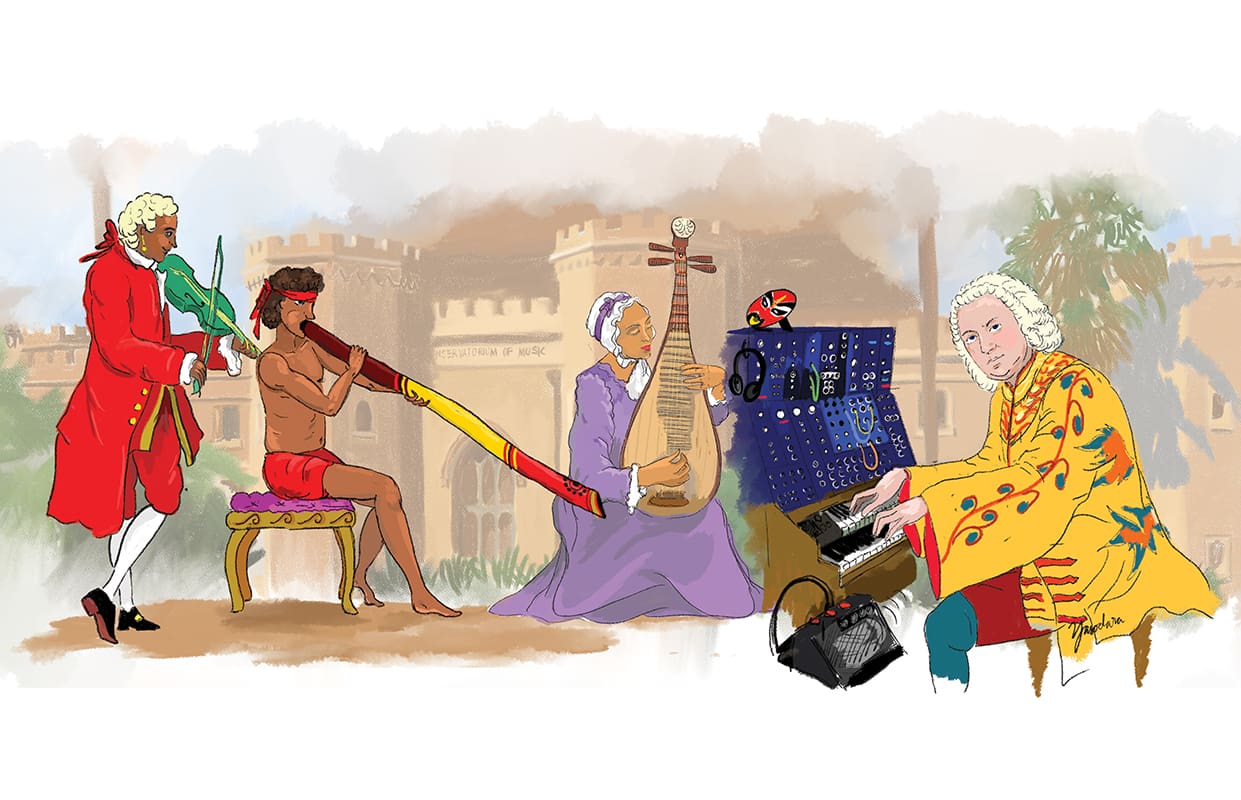Art music – structurally advanced classical music of high aesthetic value – is propelled forward in Sydney by two conflicting camps. One advocates for the cultivation of a uniquely Australian sound, while the other holds true to the canon of European classical music. A look to the past may indicate which camp will gain ascendancy.
The prominence of European music in Sydney is founded upon the expunging of Indigenous musical practices by colonisation. When the British invaded Sydney in 1788, European musical traditions were conveyed through Anglo-Saxon folk ballads brought by convicts, sailors, soldiers, and classical music by free settlers. At the time, the Classical period was at its peak in Europe, but the long duration of sea-travel and lack of a substantial printing industry meant Sydney fell several years behind Continental trends. The Australian ensembles of this era comprised small choral societies and folk groups performing whatever sheet music on whatever instruments they could find. Australian music, then, effectively adopted European sounds while neglecting the traditions of First Nations people.
Today, Sydney’s major orchestras and opera companies perpetuate the dominance of European classical music. For example, the Living Music Report found that in Sydney in 2019, works by dead, cishet, German men from the 18th-19th Centuries featured more than all female composers combined, more than Australian or living composers, and signficantly more than First Nations and non-white composers. Even a quick glance at the 2022 seasons shows an unfortunate continuation of this trend. These works are indeed incredible pieces of art, but in a country so distant and more diverse than the culture from which it originates, should they be held to a higher standard than everything else? Breaking the idea of the musical canon is a hard task; audiences and donors have expectations for specific performances, most of which are out of the control of the artistic planners. To prepare future orchestral players for these types of performances, youth orchestras also continue with this music.
The Conservatorium has been a crucial player in strengthening this European hegemony. When it was founded on the site of a crumbling, convict-era governor’s stables in 1915, the Con was the first and only state-funded conservatorium in the British Empire. Under the direction of Belgian violinist Henri Verbrugghen, the Con taught students under Continental models of musicology and performance, hosting the first full-time orchestra in Australia by the early 1920s. Under the current dean, Anna Reid, however, the Con has made substantial progress in diversifying its approach to classical music. Music Education students must take classes in non-Western theory and performance; the gamelan and Chinese music ensembles are the largest they’ve ever been; and composers of minority groups feature prominently in harmony and history classes.
This shift has occurred in the context of a broader social movement beyond the Con. Just last month, for example, the Omega Ensemble performed works by Queensland Symphony’s principal didgeridoo player William Barton alongside those of Mozart. Indigenous music has existed in the lands of the city for millenia, and the inclusion of this in the Australian sound in recent times shows an appreciation of its continuous existence and development in society. Meanwhile, USyd’s new Chinese Orchestra performed at the Lunar Festival for the City of Sydney, building on the growth of the Con’s Chinese Music Ensemble.
At the Con, there is a sense that the current orchestral culture isn’t right. From the Eurocentric days of Verbugghen’s leadership, the Con has grown to include music teachings from every genre and era, including composers and performers from all walks of life. Education is the primary way to create change, as it’s from the beginning that we can teach people about new ideas and change our thinking. There is still a while to go to fully break down Sydney’s Eurocentric basis, but with the correct leadership and planning, there is hope for the future of the Con, and Sydney’s art music landscape as a whole.





